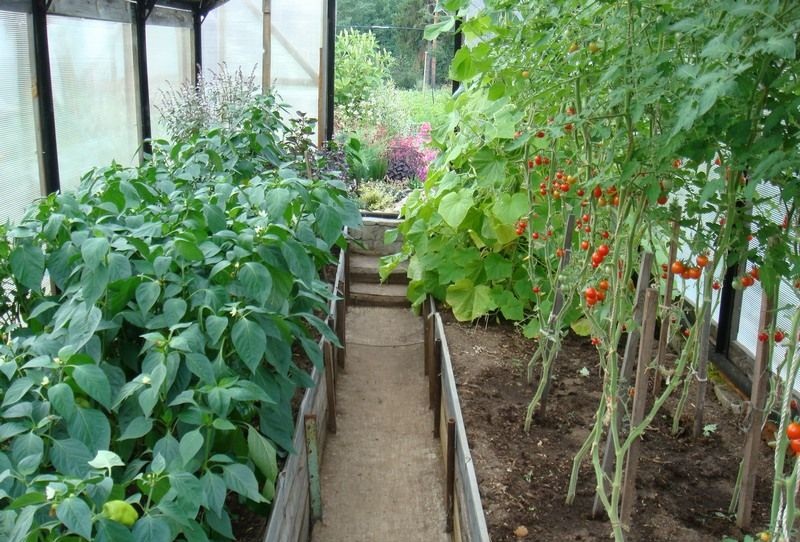 What fertilizers are not used by hardworking summer residents to grow healthy seedlings of sweet pepper and subsequently get a good harvest. Both organic and chemistry are used. However, natural remedies still remain a priority.
What fertilizers are not used by hardworking summer residents to grow healthy seedlings of sweet pepper and subsequently get a good harvest. Both organic and chemistry are used. However, natural remedies still remain a priority.
Oddly enough, yeast is considered one of the most effective recharge.
Content
Yeast dressing: description
Yeasts are unicellular fungi (living microorganisms) whose cells are microscopic in size (about 5 microns) and bud, forming a kind of colony. These microorganisms are composed of carbohydrates, proteins, various vitamins, minerals, amino acids, iron, etc. They multiply intensively in a warm, dark, enclosed space. Helps them in this glucose.
Why did yeast become so popular in gardening? And why are they so often used to make fertilizers? The fact is that due to the presence of useful micro and macro elements in them, yeast promotes rapid, and most importantly, healthy growth of pepper seedlings.
One of the advantages of this fertilizer is that the yeast is completely harmless to plants. Their use does not affect the taste and appearance of the fruit (only if for the better).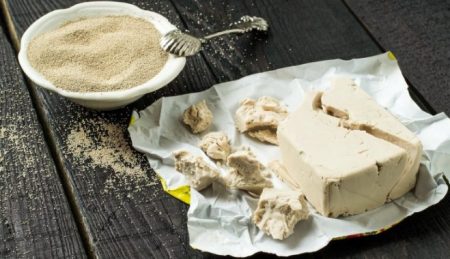
In order to deliver all the necessary vitamins and minerals to plants in the traditional way using mineral compounds, you will have to work hard, because there simply is no such drug that would include absolutely all mineral elements in its composition. While yeast fertilizer is a complex of all the necessary minerals. At one time, a huge dose of vitamins will get to the plants. It was experimentally proven that a 1% extract of yeast is able to replace all fertilizers.
Please note: powder, dry and live yeast can be used for top dressing.
The benefits of yeast nutrition
• saturates the soil with useful trace elements;
• increases plant viability;
• stimulates the growth of peppers;
• contributes to the rapid development of the root system;
• additional roots appear two weeks earlier;
• seedlings grow correctly without stretching;
• the green mass is intensively growing.
Cons: Yeast supplementation neutralizes potassium.
Bottom line: yeast feed awakens the microflora of the soil, which, saturated with vitamins, transfers all the nutrition to the roots of plants.
How does yeast fertilizer work?
Yeast does not affect the plants themselves, but the soil, that is, the bacteria living in it (plants feed on minerals, not carbohydrate proteins). Unicellular fungi, which are endowed with all of these beneficial substances, when dissolved in water, they begin to produce mesoinositol alcohol, vitamin H (biotin), and vitamins b1, which stimulate root formation. Enzymes activate the work of phytoharmones, which in turn accelerate regenerative processes. Microorganisms living in the earth begin to multiply rapidly, quickly processing organics and spreading nutrients to spores.
It’s easy to work with this simple fertilizer. You just need to remember that yeast needs three things to work: heat, time and sugar. The last element is an expensive thing and not everyone can afford to “sugary” their garden completely. Therefore, sugar can not be added to top dressing. But heat and time - the elements are required. If you hurry with the start of work before the yeast reaches its condition, the mechanism of work simply does not start, and in poorly heated soil the yeast does not activate.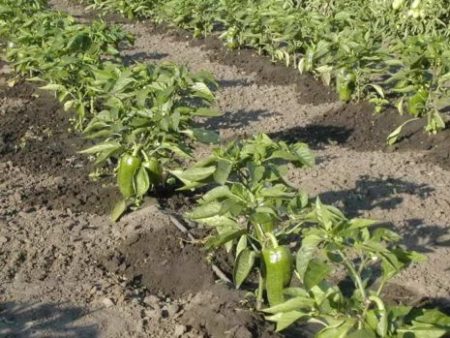
Fact: Yeast supplementation is an effective and completely inexpensive way to care for peppers.
Structure
Yeast consists of a whole complex of vitamins needed for young shoots. They include more than 60% protein, 10% carbohydrates, as well as organic iron, minerals and macronutrients.
Substances that make up yeast:
• amino acids;
• nucleic acids;
• lipids;
• carbohydrates;
• B vitamins;
• ergosterol;
• minerals (calcium, copper, phosphorus, magnesium, iron, sodium, potassium, zinc).
However, it should be borne in mind that the composition of the yeast is inconsistent, since still we are talking about living microorganisms. Their number varies depending on external factors.
Tip: since potassium in yeast is much less, it is better to combine yeast dressing with other types of fertilizers containing this element.
Efficiency
If you feed plants during the seedling period with top dressing based on yeast, then each seedling will absolutely receive its portion of nutrition. As a result, peppers will grow better, be sick less, tolerate transplantation painlessly and endure all adverse weather conditions.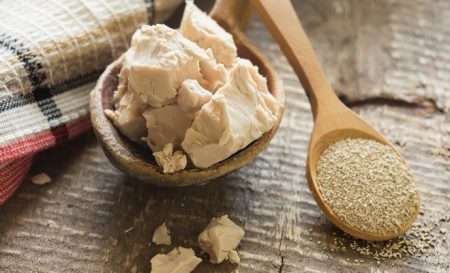
When to use Yeast
• the plant develops slowly;
• the color of the leaves becomes faded;
• bushes often get sick, wither;
• leaves twist, lose elasticity.
Fertilization dates
Pepper life begins with planting seeds in the ground. Seed material is selected large, healthy. Seedlings are sprouted, carefully caring for her during growth. When the seedlings are overgrown with leaves - the time for planting in the soil comes.
The moment of transplanting peppers to a permanent place is very difficult for young bushes. Heavily accustomed to new conditions, often they begin to hurt. The period of adaptation can be facilitated by properly applied top dressing. This very useful very effective yeast top dressing. With the help of helpers, the soil will be enriched with important elements and will nourish weakened peppers with tripled strength. Peppers very quickly develop immunity to many external factors, including diseases.
Even a few days is enough to understand how excellent yeast helps plants grow. Bushes of pepper rise, pour juice and go to growth.
Yeast top dressing can be applied a little earlier, during the period of seedling growth, when the first leaves appear on the shoots. Yeast activates their rapid growth. The next dressing can be made in three to four weeks.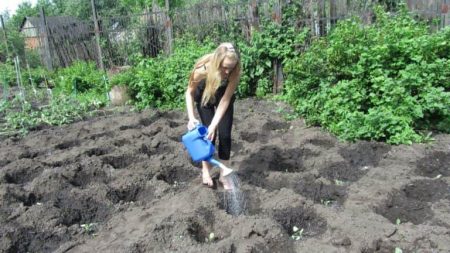
If you decide to use yeast top dressing, keep in mind that you can only feed peppers with it twice a season.
Rules for Using Yeast as Fertilizer
one.As you know, the yeast activates in the heat, and therefore, before applying fertilizer, you need to make sure that the earth is sufficiently warmed up. If the soil is not at that temperature, then the desired result can not be achieved.
2. Water for breeding yeast should not be too hot. Its optimum temperature is 30-40 degrees. In cool water, the fermentation process will be very slow. In too hot water, the fungus will die.
3. Yeast top dressing of peppers is used mainly when planting seedlings in open ground. You can also fertilize peppers with yeast once more during the season, if necessary. However, you should not get carried away with such a recharge.
4. It is better to combine yeast dressing with other mineral compounds (especially rich in calcium and magnesium).
5. The prepared solution must be used immediately. You can not store it.
6. Beer and kvass are not recommended as fertilizers, since they may contain components that are harmful to plants. Better use dry yeast.
Yeast Recipes for Feeding
Yeast dressing is very easy and quick to prepare. Fresh and dry yeast are suitable for preparing the mixture. Each gardener uses his own recipe, of which a huge amount. Someone mixes yeast with ordinary water, someone adds different ingredients to the composition.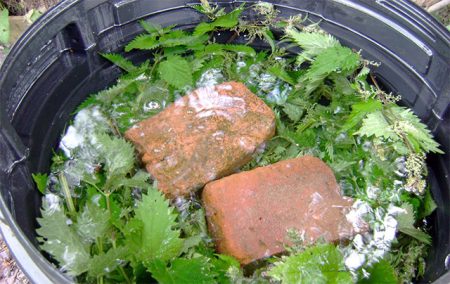
Classic feed recipe
Many summer residents do not bother and choose the simplest recipe for feeding from yeast. Both live and dry yeast are suitable for preparing fertilizer.
When using live yeast, 200 grams of the substrate should be dissolved in 10 liters of water. The solution is infused for a day, and then water the pepper bushes.
A mixture of dry yeast is prepared much faster, about two hours. A solution requires 10 grams of yeast, 10 liters of warm water, and 20 grams of sugar (to ferment faster). After 2-3 hours, the dressing will be ready for use.
Tip: when using yeast top dressing, do not forget to add wood ash to the ground. This is necessary so that the yeast does not affect the presence of potassium in the soil. To do this, before applying fertilizer under the bushes, you need to sprinkle with ash and moisten the soil well so that it is absorbed into the soil. Then, with the prepared yeast solution, water the plants (under the root) at the rate of 0.5 liters per bush. If the plant is quite mature, then increase the amount of solution to two liters.
Weed Yeast
Weed does not always bring only harm. If you combine it with yeast, then an excellent top dressing for peppers will come out. Preparing a healthy solution is easy. To do this, mowed grass is placed in a metal container, add a little crushed bread and 50 grams of diluted yeast to it. The mixture is poured with water (5 liters) and left to ferment for several days. The consumption of fertilizer obtained is 1 liter per plant.
Yeast in milk
This recipe is rarely used by gardeners, since a lot of milk is required, usually it is replaced with water. To prepare the solution, 200 grams of dried yeast and 5 liters of milk are required.
First, the yeast is mixed with a small amount of milk, with the addition of sugar, so that the fungus begins to multiply faster. The mixture is thoroughly mixed so that no lumps remain. The solution is placed in heat for a couple of hours. Then add the remaining milk and 50 liters of warm water. Ready fertilizer is watered with bushes at a rate of 1 liter per bush.
Yeast with droppings
All summer residents are aware of the benefits of chicken manure as an organic fertilizer. And if you mix it with yeast - you get an excellent fertilizer. To prepare it, you need to mix two handfuls of chicken manure, half a glass of sugar, 200 grams of wood ash and add 100 grams of the main ingredient - yeast. All components are thoroughly mixed and allowed to infuse for 2-3 hours. Then the mixture is diluted in ten liters of water and watered with bushes of sweet pepper (under the root).
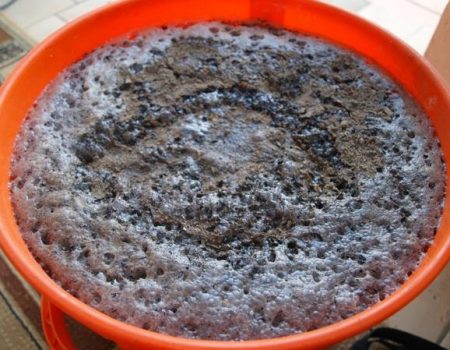
Tips for Using Yeast
• 0.5 liters of yeast solution are enough for young seedlings, 2 liters for adults;
• it is possible to feed with yeast both in the open ground, and in the greenhouse;
• You can fertilize the plants with yeast before the onset of flowering;
• if other organic components are added to the yeast, the fertilizer's efficiency will increase;
• Dry yeast cooks faster than live yeast.
We cook yeast ourselves
You can not buy ready-made yeast, but cook them at home.
Cooking Methods:
1. Sourdough from wheat grains. Grind the grains, add to them a couple of tablespoons of sugar and two tablespoons of flour. The mixture is thoroughly mixed and cooked for half an hour over low heat. After cooking, the broth is left alone for two days, so that it is well fermented. The finished substrate is mixed with water and fertilize the plants.
2. Ferment of hop cones. Pour cones with boiling water and cook for one hour. After this, strain the broth and add to it 2 tablespoons of flour and a little sugar. Leave for two days to roam. When the fermentation becomes intense, add two boiled potatoes to the mixture. After a day, the broth can be used as fertilizer at the rate of 1 cup per 10 liters of water.
Reviews
Maria
My husband and I are supporters of folk methods. They abandoned chemistry for a very long time and have not regretted a bit. We have been using yeast as fertilizer for several years. This is just a unique fertilizer! We use them not only for feeding peppers, but also for other crops, too. The result of such top dressing is visible immediately. Plants are leveled, filled with juiciness. So beautiful, tall, strong! The fruits ripen quickly, together! Bushes do not get sick. In general, yeast is just a godsend for those who want to grow a quality crop.
Nikolay
Yeast has everything plants need. In addition, they are absolutely harmless, unlike the same organics. A great alternative to purchased minerals. And a lot of money is not needed to fertilize the whole garden.
Sofia
How much she lived in the city, she thought so much that yeast is used only in cooking. And then, by the will of fate, they moved out of town, they started a garden, cattle. The land on the plot is sparse, the crop is always so-so. What we just did not try to improve its quality. And then she accidentally learned that yeast is used as fertilizer. To say that I was surprised is to say nothing! At first, she simply did not believe the stories about the miraculous effect of yeast top dressing. And then I decided to try ... The result hit me. It turns out that to improve the fertility of the soil and get excellent yields every year, you need only a few packs of yeast that cost a penny! Since then, we use only this type of fertilizer. Sometimes we experiment, add to the composition either litter, or milk, or eggshell. Watching your plants grow healthier - just magical!
Irina
I have been using yeast nutrition for several years. Like her for several reasons. Firstly, the composition of the fertilizer is very simple, and I can always be sure of the safety of the components. Secondly, such a fertilizer is quickly prepared. Thirdly, yeast supplementation is inexpensive. Fourthly, I can always be sure of the effectiveness of such a recharge. I fertilize peppers once a month, alternating components of yeast top dressing.




 Calorie pepper stuffed with meat and rice - BZHU per 100 grams
Calorie pepper stuffed with meat and rice - BZHU per 100 grams Gorky pepper - the best varieties for open ground
Gorky pepper - the best varieties for open ground Hot pepper seeds - the best varieties for open ground and reviews
Hot pepper seeds - the best varieties for open ground and reviews Capsicum tincture for hair - how to use and reviews
Capsicum tincture for hair - how to use and reviews